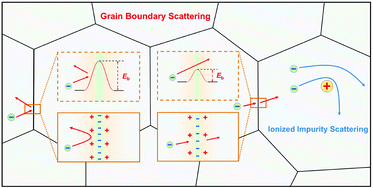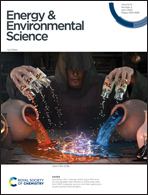Carrier grain boundary scattering in thermoelectric materials
Abstract
Bulk nanostructuring has been one of the leading strategies employed in the past decade for the optimization of thermoelectric properties by introducing strong grain boundary scattering of low-frequency phonons. However, it was recently found that the charge carrier transport in some nanostructured bulk materials can be significantly suppressed, resulting in a worse thermoelectric performance. To benefit from this strategy, the understanding of the interaction mechanism of grain boundaries on carrier transport and the elimination of its negative effect become crucial. In this review, we first discuss the trapping-state and two-phase models that are used to describe the carrier transport properties when grain boundary scattering plays a role. Then, the impact of three key factors, i.e., grain size, carrier concentration, and dielectric constant, on the strength of grain boundary scattering, as well as the strategies to enhance the thermoelectric performance, are elaborated. Furthermore, we provide an insightful understanding of the carrier grain boundary scattering and ionized impurity scattering, and propose to use the “charge shielding ratio”, a ratio of Debye screening length and effective Bohr radius, as an indicator for distinguishing the two scattering mechanisms. Finally, a further outlook on the current challenges and opportunities concerning the characterization, understanding, and engineering of grain boundary in thermoelectrics is offered.

- This article is part of the themed collection: Energy and Environmental Science Recent Review Articles


 Please wait while we load your content...
Please wait while we load your content...